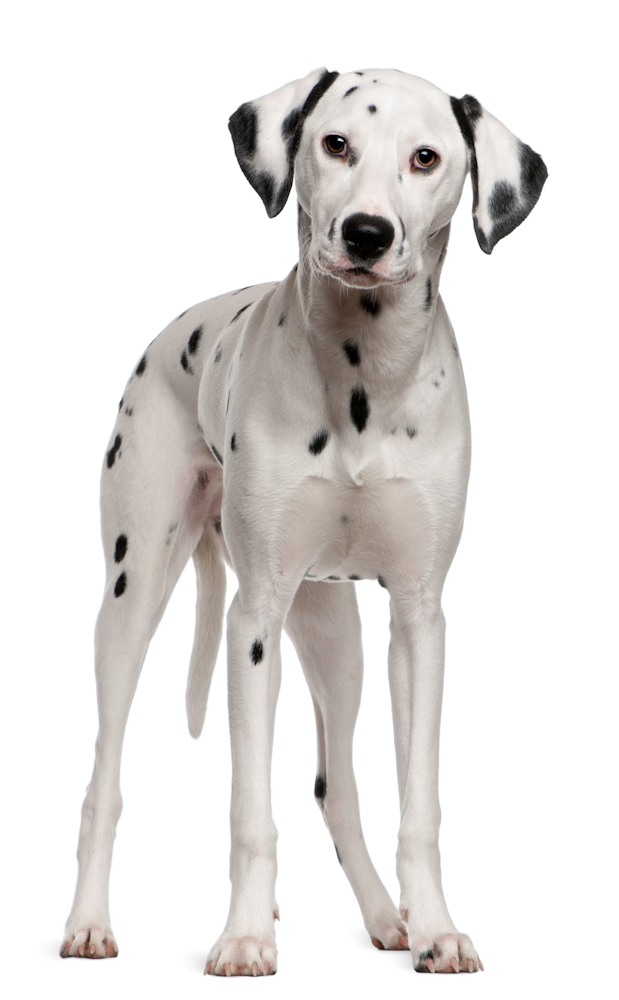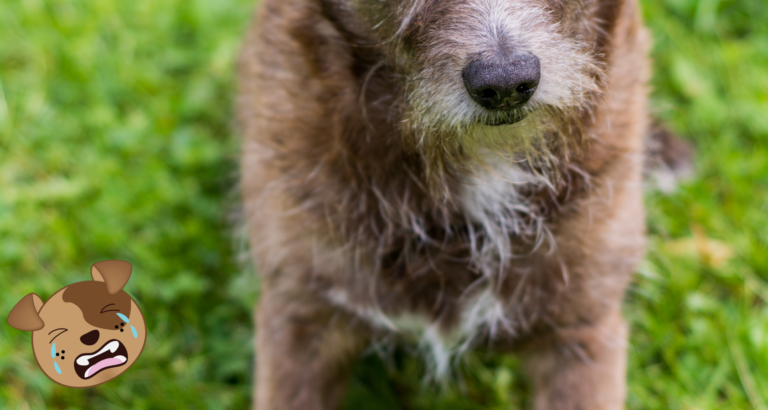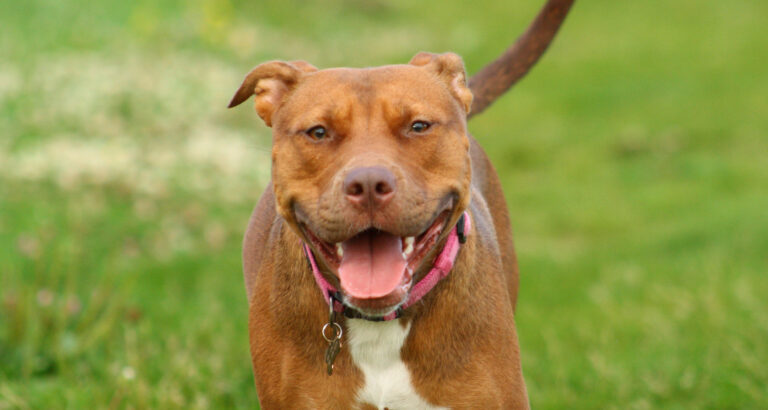30 Interesting And Fun Facts About Dogs
Last updated on November 10th, 2023 at 11:24 pm
Reading Time: 9 minutesThis post may contain affiliate links. If you click and buy we may make a commission, at no additional charge to you.
Dogs, often regarded as “man’s best friend,” have been domesticated alongside humans for centuries, displaying an incredibly distinct and compelling biology. Their strong olfactory senses, along with their remarkable facial expressions through their ears, are truly captivating. Fascinating facts exist not only in their physical traits, like their teeth and paws but also in their behavior and communication. Here are 30 astonishing and fun facts regarding these four-legged friends.
1. Intelligent As A 2-Year-Old Child
It is widely known that dogs are as intelligent as a two-year-old child. This is due to their ability to recognize and comply with different instructions and movements and study and remember novel tasks. Moreover, they can comprehend some features of human language, for instance, pointing and specific words.
2. Trained To Go Potty On Command
Teaching a canine to obey a command and urinate outdoors is definitely achievable. This process is termed “potty training”. Establishing a regular diet plan and carrying your pooch to the appropriate potty area at precise intervals, such as after meals and before going to bed, is the primary step in potty training a pup.
Gradually, the canine will link the action of heading to the designated area with urination. After the pup has made this association, it is time to begin using a precise command like “go potty” to tell them to urinate in the allotted area.
3. Top Popular Breed: The Labrador Retriever

The Labrador Retriever is an exceptionally popular breed of dog worldwide, often ranked as the most beloved in the United States by the American Kennel Club for more than two and a half decades. With its amicable, sociable demeanor, it is trained for various tasks, ranging from becoming an assistant or therapy dog to helping in search and rescue operations and even as a hunting or family companion.
4. Basenji Doesn’t Bark
The Basenji, commonly known as the “barkless dog,” is an ancient breed of African hunting dog that has a unique vocalization instead of barking like other canines. Their larynx, or voice box, is shaped differently, which is why their sounds differ – they yodel and chortle rather than producing the same vocalizations as other dogs. This unique anatomy limits their ability to produce the same type of sounds.
5. Can Hear Four Times Better Than Us
Canines possess a remarkable capacity for hearing which is significantly greater than humans. It is believed that a dog’s auditory acuity is approximately four times greater than a human’s, partially because their eardrums are more receptive and contain a higher concentration of auditory receptors.
6. Chihuahua is the Smallest Breed
The Chihuahua, the tiniest of all dog breeds, originates from the Mexican state of Chihuahua and is characterized by their diminutive size and petite weight ranging from 2-6 pounds (1.8-2.7 kg) and standing at an average height of five inches.

7. A Dog’s Sense Of Smell Is 1,000 Times More Powerful Than A Human’s
It is indisputable that the canine sense of smell is incredibly more advanced than that of humans. Scientific studies have revealed that a dog’s sniffer is roughly 1,000 times more perceptive than our own. This is attributable to the fact that pooches have a greater number of olfactory receptors in their noses and a larger portion of their brain devoted to interpreting scents.
8. A Dog’s Heart Beats Is Between 70 And 120 Times Per Minute
Generally, the heartbeat of a canine will be between 60 to 140 beats per minute. Nonetheless, the rate can vary depending on the breed, size, health, and activity level of the dog. Usually, the heart rate of small breeds of dogs will be higher than those of the larger ones.
9. Dogs Have Three Eyelids
Dogs are unique in that they possess three eyelids. In addition to the familiar upper and lower lids seen in humans, dogs have an additional eyelid situated near the nose, known as the “haw” or “nictitating membrane.” This third eyelid has a number of key roles in eye health. It works to spread tear film across the eye evenly, helping to ensure the eye remains properly lubricated and healthy.
10. A Dog’s Average Lifespan Is 10-13 Years
The normal life expectancy of a canine varies from 10 to 13 years; nevertheless, this varies significantly depending on the size and breed. Generally, smaller breeds live longer than larger breeds, and specific breeds have longer lifespans than other breeds.
11. A Dog’s Ears Are Extremely Expressive And Can Convey A Wide Range Of Emotions

Canines possess ears with expressive qualities, able to exhibit a vast assortment of feelings. The posture, activity, and structure of a dog’s ears can demonstrate their state of mind, vigilance, and motives.
12. 30% Of Dalmatians Are Deaf In One Ear
It is indeed a fact that a substantial proportion of Dalmatians have congenital deafness, a hereditary problem that may involve either or both of the ears. Exact percentages may differ, but research studies indicate that around 30% of Dalmatians are deaf in one ear, and about 10-12% suffer from a double hearing loss. This condition is brought about by a genetic variation that interferes with the maturation of the inner ear, thereby leading to an impairment of hearing.

13. A Dog’s Tail Is Used As A Form Of Communication
Absolutely, a canine’s tail is an integral instrument of communication. A pup’s tail position, motion, and wagging can demonstrate their sentiments, enthusiasm, and motives.
14. A Dog’s Paws Have Sweat Glands That Allow Them To Leave Their Scent
Unlike humans, dogs do not have sweat glands present on their paws; rather, they have scent glands on their paws, which they use to interact with other dogs and leave their scent in certain areas.
15. A Dog’s Fur Has A Unique Purpose
Indeed, a canine’s coat serves a crucial and essential purpose. It not only insulates them and keeps them warm but also guards their skin from the sun’s rays, the breeze, and precipitation.
16. A Dog’s Teeth Are Extremely Powerful
Canines possess immensely formidable teeth that are expertly tailored for biting, munching, and shredding. Fitted with a full set of 42 adult teeth, they possess sharp canines designed to hold onto prey and strong molars meant to break apart food.
17. Over 30 Breeds Of Dogs Have Spots On Their Tongue
It is undeniable that some types of dogs possess distinctive markings on their tongues. This unique trait, commonly referred to as ‘frenzy’, is the result of a genetic mutation that causes areas of pigmentation to form on the tongue. The breeds typically display this pattern include the Chow Chow, Shar Pei, Akita, Shih Tzu, and Chinese Shar Pei.
18. The First Mammal To Orbit Earth Was A Stray Dog
It is without a doubt that Laika, a mixed-breed dog, was the very first mammal to go around Earth in space. On the 3rd of November, 1957, Laika was put into a Soviet spacecraft, Sputnik 2, to be sent into orbit around our planet. Although Laika’s mission was doomed to be a one-way trip due to the lack of capability of the spacecraft to come back to Earth, its purpose was to analyze the effects of space travel on living organisms and the dependability of the spacecraft.
19. The Nitrogen In Your Dogs Urine Is What Kills Grass
Certainly, the nitrogen present in a dog’s urine can detrimentally impact grass. One of the major elements of urine is nitrogen, and when a canine relieves themselves on the grass, the nitrogen within the urine may cause the lawn to become yellow or brown. This is because the nitrogen can encourage the grass to grow too fast, potentially resulting in its stunting or dying.
20. Dogs Have Their Own Poop Compass
Dogs possess a natural capacity to line their bodies up along a north-south axis when relieving themselves, a behavior famously known as “magnetic alignment”.
21. Dogs Can Detect Seizures
Canines can be trained to identify seizures in human beings. Seizure-alert dogs are taught to detect the odors, conduct, and physical cues that occur prior to a seizure. Consequently, they can notify the individual or their caretaker to take the necessary steps, such as repositioning to a safe environment or asking for assistance.
22. Dogs Can tell When We’re Lying
Dogs have an astonishingly heightened sensitivity to human emotions and postures, with the capacity to sense variations in our demeanor and vocal intonation. Studies even propose that dogs could potentially discern when we are being untruthful through noticing modifications in our body language, voice, and aroma.
23. Dogs Have Better Night Vision Than Us
Canines possess superior night vision compared to humans, for their retinas comprise both rods and cones – specialized light-sensitive cells – whereas ours contain only rods. This difference in the number of cells present enables dogs to better perceive in dark conditions.
24. Dogs Snore More Than Cats
Dogs tend to snore more than cats due to the relaxed upper airway in them, which allows for the soft palate and other structures within their airway to vibrate and make the snoring sound.
25. Dogs Go Grey Early Due To Stress
As dogs age, their hair may gradually turn grey, much like humans. This process is part of the natural aging process, and it typically starts at varying ages, depending on the breed, genetic background, and other influences.
26. Dogs Dream Just Like Us
Dogs appear to experience dream of states similar to humans. During the rapid eye movement (REM) phase of sleep, the stage of sleep when most dreaming happens, canine brains display activity that is quite analogous to what is seen in humans. This indicates that dogs may be undergoing the same kinds of mental activity during REM, which includes dreaming.
27. Petting A Dog Can Lower Your Blood Pressure
Research has established that engaging with furry friends, such as dogs, can induce feelings of serenity and lessen heart rate and blood pressure. This is assumed to be because of the production of the endorphin oxytocin, which is associated with an affectionate and tranquil sensation.
28. Some Dogs Are Incredible Swimmers
Indeed, a number of dog breeds have been specifically developed for aquatic activities, like swimming and fetching. Examples of these breeds include the Labrador Retriever, Golden Retriever, Chesapeake Bay Retriever, and Irish Water Spaniel.
29. Dogs Have 18 Muscles Controlling Their Ears
It is a fact that dogs possess 18 muscles in their ears that facilitate their capacity to rotate and swivel them in various directions, providing them with the opportunity to hone their hearing acuity and connect with other dogs.
30. Dogs Get Jealous
Dogs are emotionally complex animals and are capable of displaying similar emotions to that of jealousy, including possessiveness and envy. Their social bonds to their humans and other animals are extremely important, so when they sense a possible threat to those connections, they can act out in ways such as growling, biting, and shoving away the perceived adversary. These displays of possessiveness and jealousy may manifest when a new pet or person is introduced into the household.
Bonus Fact – Dogs Gaining Respect in World Cultures
Many cultures either promote or shun dogs as loyal companions or as low level life forms that should not be respected. For instance, the Christian culture has widely accepted dogs as symbols of faithfulness and loyalty, while Muslim cultures often portray dogs as dirty and negative. This negative view in Islamic communities tends to be more traditional than it is a directive of the Qu-ran as Islam teaches respect for animals and it is changing in more Muslim areas.
Jewish culture has also had a negative view of dogs in the past. There are written references to Gentiles being called “dogs” as a slur, however, in recent history dogs have become good friends to many Jewish families. A book titled, “A Jew’s Best Friend? The Image of the Dog throughout Jewish History” written by Phillip Ackerman-Lieberman, Rakefet Zalashik relays this historical change over time. Similarly, there are positive changes referenced in “Good Dog-Bad Dog: Jews and Their Dogs in Ancient Jewish Society,” by Joshua Schwartz.
Final Thoughts On Dog Facts
Dogs are extraordinary and fascinating animals with countless noteworthy traits. From their intelligence and receptiveness to training to their amazing sense of smell and acuity of hearing, dogs have a lot to offer.
About The Author
Mother, Certified animal Behaviorist who loves pets. Has two dogs and a cat. Trained veterinarian and loves to write about her experiences.








